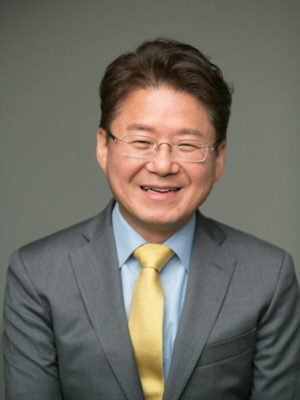글로벌공장 활용 통해 글로벌 사각지대 없어지는 효과
미국 기업 이미지 제고, 유연한 정책적 고려 매우 긍정

현대차그룹이 미국 GM과 전략적인 협력관계를 맺었다. 현재와 미래의 불확실성이 큰 상황에서 최고의 결과를 도출할 수 있는 생각지도 못한 ‘신의 한수’라 평가된다.
이번 협력은 단순한 분야별 공동연구와 협력이 아닌 전방위적인 포괄적 협력관계라는 부분이 기존 관례와 크게 다른 부분이라 평가된다.
이번 협력을 통하여 모든 분야에서 함께할 수 있는 토대가 마련되어 서로의 단점을 보완하면서 장점을 부각시켜 시너지를 내는 글로벌 효과가 기대된다는 것이다.
우선 일반적으로 예상되는 시너지를 생각할 수 있다.
가장 좋은 대상은 글로벌 공장의 활용이다. 이미 현대차그룹은 글로벌 시장에서 3위를 차지하는 최고의 자동차 그룹이고 그 만큼 글로벌 공장도 확대되고 있는 상황이다.
GM은 5위권이지만 미국을 대표하는 빅3의 선두주자이고 상징적인 의미가 큰 제작사로 역시 글로벌 공장을 다수 소유하고 있다.
이 두 글로벌 공장 등이 연계하면 서로간의 활용도가 높아지고 필요하면 글로벌 공동개발 모델을 서로간의 공장에서 활용할 수 있다. 글로벌 사각지대가 없어지는 효과가 커지는 것이다.
서로 진출을 못한 국가에 역할을 분담할 수도 있을 것이다. 당연히 철강 등 부품은 물론 배터리 원자재를 비롯한 각종 부품이나 원료를 함께 운용하면서 비용을 절감하고 경쟁력을 높일 수 있다.
공동 월드 베스트셀러 모델을 다수 내보내면서 공동 홍보와 주도권 경쟁에서 규모의 경제를 통화여 글로벌 시장 점유율을 높일 수 있다.
역시 현대차그룹의 장점인 전기차와 하이브리드차 모델은 GM이 가장 갖고 싶어하는 모델이다. 역시 서로 공유할 수 있다. 특히 미래 모빌리티 모델인 수소모델은 승용 및 상용 모두 현대차그룹의 노하우가 크다. GM이 가장 갖고 싶어하는 하이브리드 모델도 현대차그룹이 토요타와 더불어 최고의 기술력을 보유하고 있다.
최근 ‘전기차 캐즘’으로 판매율이 하락하는 전기차를 대신하여 하이브리드차가 최고의 판매율을 기록하고 있지만 GM에 이 노하우를 줄 수도 있다. 대신 미국만이 가진 300만대 이상의 픽업트럭 시장을 함께 공략할 수 있다.
픽업트럭 시장은 규모도 크지만 미국 제작사만 가진 특징으로 해외에 문을 열어준 사례는 없기 때문이다. 모든 분야에서 최고의 시너지가 기대되는 매머드급 협력관계라 할 수 있다. 글로벌 제작사가 모두 긴장하는 최고의 협력관계이다.
글로벌 판매 1위인 토요타와 2위인 폭스바겐 그룹의 긴장도가 크게 높아질 것으로 예상된다. 이번 협력으로 2위 폭스바겐그룹을 넘는 것은 시간문제이고 토요타에 실질적인 위협을 줄 수 있을 것이기 때문이다.
이미 현대차그룹은 해외 평가기관에서 최고의 평점을 받고 있으며, 작년 영업이익 약 27조원, 올해는 30조원도 가능할 수도 있기 때문이다.
현대차그룹은 내연기관차부터 하이브리드는 물론 전기차와 수소차까지 전 분야를 망라하면서 글로벌 시장에서 이미 주도권을 쥐기 시작하였다.
예전의 현대차그룹이 아닌 것이다.
여기에 제네시스 등의 프리미엄 모델은 국내는 물론 미국에서 대성공을 거두면서 점차 점유율도 올라가는 상황이다. GM의 입장에서도 당연히 현대차그룹과의 포괄적 협력은 최고의 실적을 거둘 수 있기 때문이다.
특히 미국 내에서의 상황에 큰 도움이 될 것이다. 현대차그룹은 현재 미국 시장에서 두 자리 숫자인 10%의 점유율을 올리고 있고 더욱 늘고 있는 상황이다. 어느 때보다 대미흑자 규모도 커지면서 미국 내에서 경각심이 커지고 있는 실정이다.
즉 미국의 입장에서는 이러한 적자 구모가 늘고 있는 부분은 분명히 정치권부터 시그널이 온다는 뜻이다.
이미 미국 대선 체제에서 어느 후보도 이에 대한 긍정적인 인식을 줄어들고 있고 혹시라도 트럼프가 당선되면 일괄 관세로 10% 이상 부과하게 되면 심각한 타격도 예상되기 때문이다.
따라서 이번 협력으로 현재의 현대차그룹의 대미흑자 등의 문제점을 해소할 수 있는 단초가 될 수 있다는 점도 긍정적이고 특히 미국에 있는 공장이나 해당 법인은 한국 제작사가 아닌 확실하게 미국 기업이라는 이미지 제고를 통하여 유연성 있는 정책적 고려가 될 수 있다는 점도 매우 긍정적이라 할 수 있다. 미국 내에서의 입지가 든든해진다는 뜻이다.
심지어는 국내 한국GM에도 긍정적인 이미지를 줄 수 있다. GM은 지난 20년간 글로벌 시장에서 공장이나 지사가 철수하면서 해당 지역이나 국가에 치명적인 영향을 준 사례가 많은 기업이다.
물론 GM의 입장에서는 당연히 경쟁력이 떨어진 공장을 매각하고 철수한다고 하고 있지만 자동차 공장은 도시나 국가 경제를 받치는 핵심 역량이라는 측면에서 해당 지역은 큰 영향을 받을 수밖에 없다고 하겠다. 이러한 GM의 문화가 확산되면서 글로벌 시장에서 GM의 인식은 그리 좋은 상황은 아니라 하겠다. 우리도 이미 군산공장 폐쇄로 인하여 그 후유증이 심각하였고 정부에서 매머드급 보조를 하였으나 도리어 연구개발 법인과 생산법인을 분리하여 떠나기 좋게 구축되면서 노사갈등의 요소로 떠오르기도 하였다.
이번 협력으로 한국GM의 공장이나 역할이 크게 달라지면서 유연성 있는 활용과 더불어 전략적 연구개발과 생산을 키울 수 있는 기회가 늘 가능성도 있다고 하겠다. 즉 국내 존재의 이유를 키우고 활용도를 높인다는 뜻이다. 그동안 노조에서 항상 요구하던 하이브리드차와 전기차 생산도 현대차그룹과 함께 연계하면서 성장할 수 있는 계기도 마련될 수 있을 것이라는 희망도 가질 수 있다.
마지막으로 미국이나 유럽 등을 필두로 자국 우선주의가 팽배되고 확산되고 있는 상황에서 수출을 기반으로 하는 우리 입장에서는 고민이 많아지는 형국이다.
이 상황에서 이번 협력이 이를 극복할 수 있는 기회도 늘게 되고 고민을 공유할 수 있다는 측면에서 더욱 의미가 크다고 하겠다. 그것도 일반 글로벌 제작사가 아닌 미국의 자존심이라고 하는 GM과의 협력 의미가 더욱 부각되는 이유라 하겠다.
이번 협력으로 현대차그룹은 글로벌 시장에서 실질적으로 글로벌 No.1을 위한 시작점을 알리는 계기가 된다고 확신한다. 국내 경제의 한 축을 담당하는 현대차그룹이 진정한 글로벌 선두주자로 자리매김하면서 확실한 글로벌 대표기업으로 발돋음 하기를 바란다.
 현대차그룹이 미국 GM과 전략적인 협력관계를 맺었다. 현재와 미래의 불확실성이 큰 상황에서 최고의 결과를 도출할 수 있는 생각지도 못한 ‘신의 한수’라 평가된다.
현대차그룹이 미국 GM과 전략적인 협력관계를 맺었다. 현재와 미래의 불확실성이 큰 상황에서 최고의 결과를 도출할 수 있는 생각지도 못한 ‘신의 한수’라 평가된다.